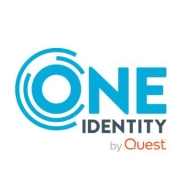

Splunk User Behavior Analytics and One Identity Safeguard compete in the data analysis and security management space. Splunk holds the advantage in rapid data analysis and integration, while Safeguard is stronger in session monitoring and access management.
Features: Splunk excels with rapid data analysis, advanced threat detection, and customizable dashboards, offering advanced indexing and ease of integration with various technologies. One Identity Safeguard provides robust security features, focusing on session monitoring, transparent integration, and comprehensive auditing capabilities, which enhance its access management and session recording strengths.
Room for Improvement: Splunk could improve by reducing pricing complexity, enhancing dashboard flexibility, and integrating more real-time analytics features. Further integration with third-party solutions and simplified user-customized dashboards are desired. One Identity Safeguard can enhance its system integration, support for various protocols, and user interface. Improved session management and reduced storage demands are also required enhancements.
Ease of Deployment and Customer Service: Splunk offers flexibility across on-premises and public cloud environments with strong technical support and customer service. It is known for stability and satisfactory support. One Identity Safeguard primarily operates on-premises with limited private cloud support, and many users suggest improvements in customer support and deployment experience.
Pricing and ROI: Splunk's complex licensing model often leads to high perceived costs affecting budget predictability, yet it provides significant productivity gains over time. One Identity Safeguard, although costly as usage scales, offers a straightforward pricing model with structured licensing, aligning comprehensive security features with pricing.
Any PAM solution, when I deploy it well and customers use it, leads to a return on investment.
The solution can save costs by improving incident resolution times and reducing security incident costs.
I sometimes need escalations to reach expertise.
Sometimes, I get a very helpful response and they address issues on a call.
When I have day-to-day incidents and problems, the response is good enough in terms of time and quality.
Mission-critical offering a dedicated team, proactive monitoring, and fast resolution.
I would rate the support at eight, meaning there's some room for improvement.
Splunk's technical support is amazing.
The scalability of One Identity Safeguard is perfect, scoring ten out of ten.
We have a cluster of SPPs and a cluster of SPSs, and we can add a node to that cluster without much fuss.
I would rate it a nine out of ten for scalability.
Splunk User Behavior Analytics is highly scalable, designed for enterprise scalability, allowing expansion of data ingestion, indexing, and search capabilities as log volumes grow.
I would rate it a nine out of ten for stability.
In terms of stability, I rate One Identity Safeguard nine to ten out of ten.
I encounter problems primarily with the failover procedure.
Splunk User Behavior Analytics is a one hundred percent stable solution.
Splunk User Behavior Analytics is highly stable and reliable, even in large-scale enterprise environments with high log injection rates.
Sometimes issues occur when handling long-term data.
For some configurations on the SPS side, if I need to make changes, such as for DNS servers, I must redeploy the machine.
There are many steps. We are still in the onboarding phase, and it seems very manual.
Another area for improvement could be the threat detection capabilities, like those seen in other PAM vendors.
I encountered several issues while trying to create solutions for this advanced version, which seem unrelated to query or data issues.
High data ingestion costs can be an issue, especially for large enterprises, as Splunk charges based on the amount of data processed.
Advanced reporting could see enhancements as there are some issues with latency.
It is one of those where the more you buy, the cheaper it is.
It is cheaper than CyberArk.
It is more expensive than Secret Server but way less expensive than CyberArk.
Comparing with the competitors, it's a bit expensive.
The pricing is based on the amount of data processed, and it is considered a high-level investment for enterprises.
The auditing and approval mechanisms are features we did not have before and are greatly appreciated.
I think One Identity should improve its documentation because it is vast and not clear, and clear documentation on implementing the solution would be advantageous for consultants.
Compared to other PAM solutions, it is easy to implement and use from an administrator's point of view.
I also utilize it for anomaly detection and behavior analysis, particularly using Splunk's machine learning environment.
Features like alerts and auto report generation are valuable.
Splunk User Behavior Analytics offers several beneficial features, such as Insider Threat Detection, account compromise detection, risk scoring, threat detection, and machine anomaly detection.


One Identity Safeguard manages and monitors privileged access, enhancing security with features like automatic session recording, real-time monitoring, and credential rotation. It integrates seamlessly, supports compliance with audit trails, and improves operational efficiency across organizations. This robust platform significantly bolsters security protocols while controlling sensitive operations.
Splunk User Behavior Analytics is a behavior-based threat detection is based on machine learning methodologies that require no signatures or human analysis, enabling multi-entity behavior profiling and peer group analytics for users, devices, service accounts and applications. It detects insider threats and external attacks using out-of-the-box purpose-built that helps organizations find known, unknown and hidden threats, but extensible unsupervised machine learning (ML) algorithms, provides context around the threat via ML driven anomaly correlation and visual mapping of stitched anomalies over various phases of the attack lifecycle (Kill-Chain View). It uses a data science driven approach that produces actionable results with risk ratings and supporting evidence that increases SOC efficiency and supports bi-directional integration with Splunk Enterprise for data ingestion and correlation and with Splunk Enterprise Security for incident scoping, workflow management and automated response. The result is automated, accurate threat and anomaly detection.
We monitor all User Entity Behavior Analytics (UEBA) reviews to prevent fraudulent reviews and keep review quality high. We do not post reviews by company employees or direct competitors. We validate each review for authenticity via cross-reference with LinkedIn, and personal follow-up with the reviewer when necessary.